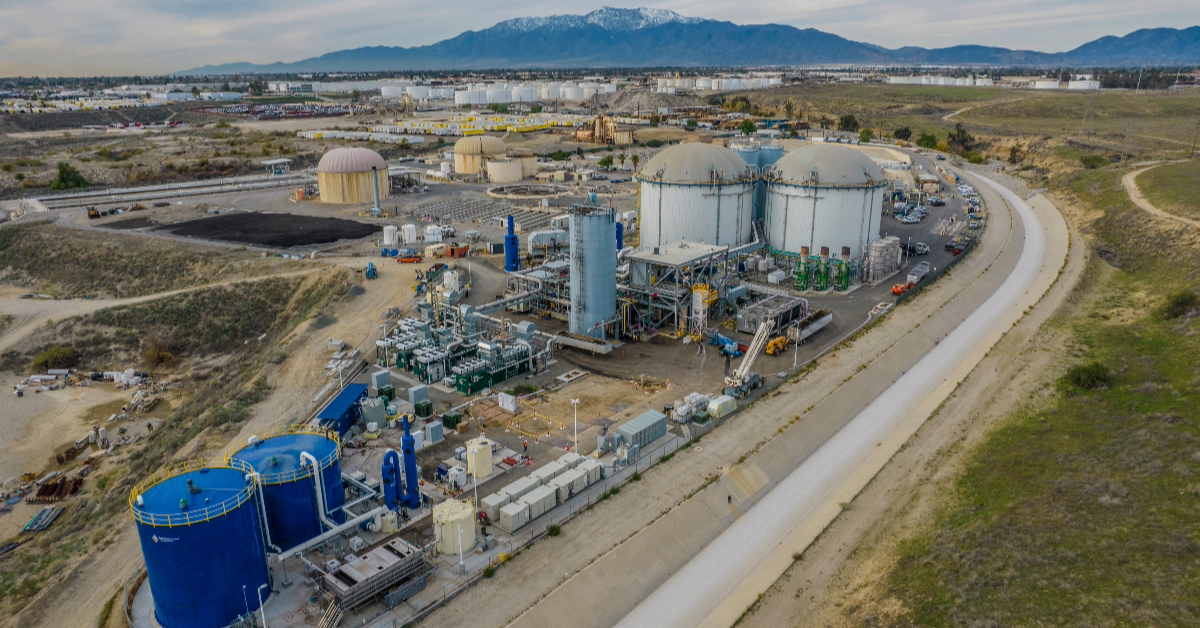MOUNTAIN VIEW, CA (October 3, 2023) — Decentralized energy resiliency empowers the Department of Defense (DoD) to sustain a wide range of operations—from humanitarian or natural disaster assistance to countering threats—at installations and in contested logistics environments. To execute, critical facilities are now being equipped with prototype advanced energy storage systems to fulfill energy-dense operations and installation energy with resilient power system backups.

The Extended Duration for Storage Installations (EDSI) project will make resilient backup power systems a reality for DoD installations and operational energy platforms.
The Extended Duration for Storage Installations (EDSI) project will make resilient backup power systems a reality for DoD installations and operational energy platforms by increasing the minimum power threshold and uptime that batteries, bases and battlefield energy, and sourcing use can all stay online. Since battery systems can draw power during non-peak times for lower cost, the EDSI effort will help installations lower their power inputs and draws to isolate high power loads when general demand for electricity is high in containers that can be stationary and mobile.
The Defense Innovation Unit (DIU), in partnership with the U.S. Air Force and U.S. Navy, awarded three prototype contracts to CellCube, Inc. (Denver, CO and Vienna, Austria), DD Dannar, LLC (Muncie, IN), and Redflow Limited (San Francisco, CA and Brisbane, AUS) where:
CellCube’s megawatt-scale vanadium redox flow battery and management system will deploy integrated hardware and software to connect and balance base energy systems hosted in collaboration with the Navy and Marine Corps.
Four models of distribution-class mobile power systems made by Dannar will deploy multi-phase units to forge a two-tiered project supporting electric vertical takeoff and landing (eVTOL) vehicle operations at two sites held by the Air Force and vehicle to grid/vehicle to vehicle resilience evaluation efforts at three more operated by the Navy and Marine Corps.
Redflow’s megawatt-scale zinc-bromine flow battery and control system will be trialed for the U.S. Air Force at another site where extended storage hardware will link with microgrid software to integrate multiple onsite systems. Redflow’s solution will enable the microgrid to provide a dispatchable solar + storage resource for peak shaving and energy resilience.

Four models of distribution-class mobile power systems made by Dannar will deploy multi-phase units to forge a two-tiered project supporting electric vertical takeoff and landing (eVTOL) vehicle operations at two Air Force sites.
All DIU vendors with EDSI-awarded prototypes will face field trials —- which sets common core performance requirements for both mobile and stationary battery energy storage system (BESS) solutions —- to meet minimal criteria by providing high availability of electric power at no less than 50 kilowatts (kW) up to 1 megawatt (MW) for at least eight consecutive hours. Additional defense and vendor partners are expected to extract additional commercial capability to scale up new chemistries and uses.
“Advanced capabilities will enable us to fill gaps in existing electrical infrastructure and manage energy resiliency and charging limitations related to eVTOLs while also increasing the number of eVTOL flights possible per day and utilizing more renewable energy sources,” said AFWERX Agility Prime Engineer, Brooke Ezell. “We are looking at fixed and mobile distribution class solutions for critical energy systems serving our community of military bases and operators as fleets electrify.”
EDSI provides the defense environment with an expandable set of resources to resolve thinking and non-thinking threats ranging from extreme climates to blackouts and brownouts. In these events, high power availability empowers missions enabling installations to support operations downrange as well as in the homeland in the near term. Longer-term benefits examined by the EDSI project are anticipated to consider how stronger and longer device performance can be further coordinated for new efficiencies.
“We are striving for excellence in mission through active management of finite resources to offset risk of cost or mission capability inclusive of training and operating in extreme weather,” said USMC Energy Manager Andy Oddo.

CellCube’s megawatt-scale vanadium redox flow battery and management system will deploy integrated hardware and software to connect and balance base energy systems hosted in collaboration with the Navy and Marine Corps.
To the extent that environmental and climate changes require adaptation to empowering longer ride-through for installations, infrastructure and operations to stay online, EDSI provides ways to cost-effectively source power to facilities without experiencing more frequent and/or extreme outages.
"Through EDSI, not only does the DoD get the advantage of energy resiliency during adverse weather conditions, but now we are able to store energy during non-peak times and also tie into renewable sources, optimizing best utilization and economic practices," added Air Force Lt. Col Ben Thomas.
Through the EDSI project, DoD is adding resilience by building up storage from grid-supplied power to keep installation lights on as well as using installation energy in off-peak periods to power up a BESS system that can be used to quickly charge operational energy platforms for an eight-hour day.
Attaching mobile or stationary battery energy storage systems to energy-powered accessories and devices drives the need for additional capacity enabling higher power input and higher levels of long-lasting output to produce new flexibility. This meets the DoD’s demand signal for resilience to be more robust than was traditionally defined, and to extend that to multiple domains for many energy system types. As Naval Information Warfare Center Pacific Program Manager Marissa Brand observed, “Decentralized energy resiliency allows the DoD to sustain a wide range of operations such as in humanitarian or natural disaster assistance to a contested logistics environment. That is, developing advanced BESS to work at a high level in very hot, cold, arid, humid and salty environments to deliver quality power plus integration with other systems enabling similar stretch of related platforms and mission capabilities.”
